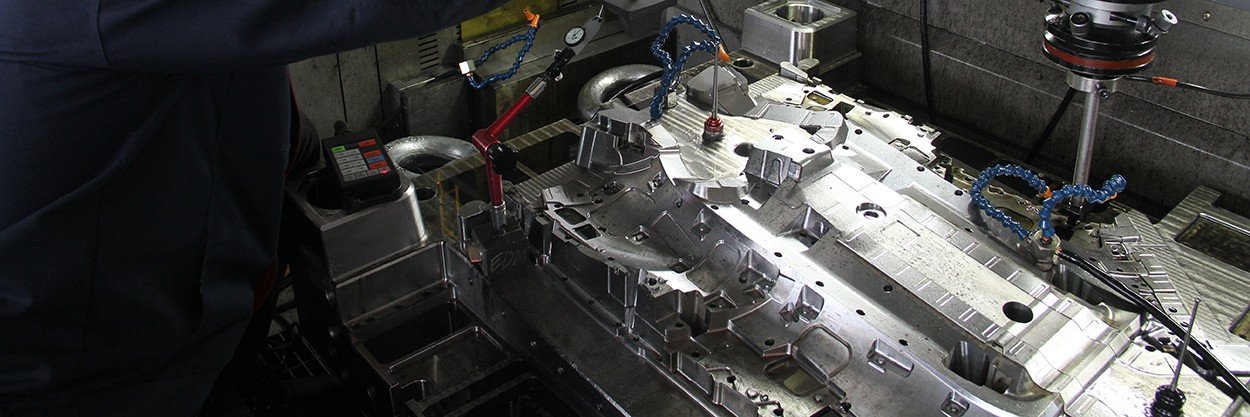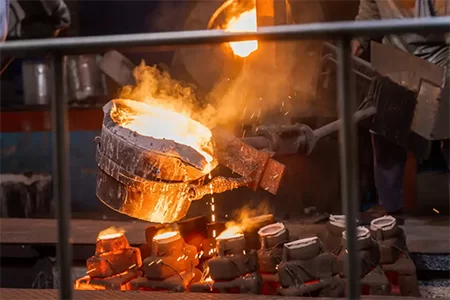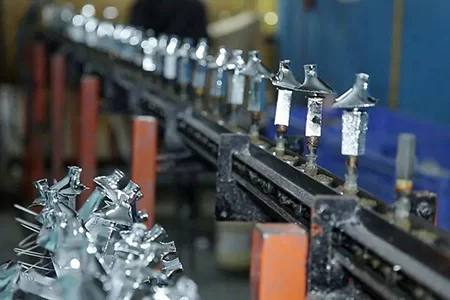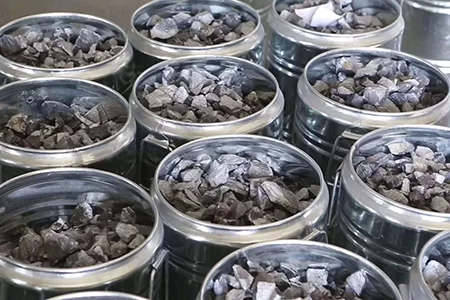
Achieving Precision in Metal Casting - Key Strategies for High-Quality Casting Parts
-
Home>
-
Blog>
-
Technology>
Achieving Precision in Metal Casting: Key Strategies for High-Quality Casting Parts
In the world of manufacturing, precision casting has emerged as a highly effective method for producing complex and intricate metal components with tight tolerances. Whether it's for the aerospace, automotive, medical, or any other industry that demands high-precision parts, ensuring the accuracy of metal castings is of utmost importance. In this blog post, we will delve into the various factors and techniques involved in achieving precision in precision casting, exploring how manufacturers can overcome challenges and produce metal parts with the highest level of accuracy.
Understanding Precision Casting
Precision casting, also known as investment casting or lost-wax casting, is a manufacturing process that allows for the production of highly detailed and accurate metal parts. The process involves creating a wax pattern of the desired part, coating it with a ceramic shell, and then melting out the wax to leave a hollow mold. Molten metal is then poured into the mold, filling the void left by the wax pattern. Once the metal solidifies, the ceramic shell is removed, revealing the finished metal casting.
One of the key advantages of precision casting is its ability to produce parts with complex geometries and fine details that would be difficult or impossible to achieve with other manufacturing methods. This makes it an ideal choice for applications where precision and accuracy are critical, such as in the production of turbine blades, engine components, and medical implants.

Factors Affecting Precision in Metal Casting
Several factors can influence the precision of metal castings. Understanding and controlling these factors are essential for ensuring the production of high-quality precision casting parts.
Pattern Quality
The wax pattern is the starting point of the precision casting process, and its quality has a direct impact on the accuracy of the final metal casting. A well-made wax pattern should have the exact dimensions and surface finish required for the finished part. Any defects or inaccuracies in the wax pattern will be transferred to the metal casting.
To ensure the highest quality wax patterns, it is important to use high-quality wax materials and the advanced mold manufacturing technology. The wax should be carefully injected into the mold to ensure complete filling and uniform thickness. Additionally, the wax pattern should be inspected for any defects, such as bubbles, voids, or surface irregularities, before proceeding with the casting process.
Mold Design and Preparation
The ceramic shell mold plays a crucial role in determining the accuracy of the metal casting. The mold should be designed to withstand the high temperatures and pressures involved in the casting process without deforming or cracking. A well-designed mold will also ensure that the molten metal flows evenly and fills all the details of the wax pattern.
To prepare the mold, the wax pattern is first coated with a series of ceramic slurries and stucco layers. Each layer is allowed to dry and harden before applying the next one. The number of layers and the type of ceramic materials used will depend on the complexity and size of the part being cast. After the final layer is applied, the mold is fired in a furnace to burn out the wax pattern and sinter the ceramic shell.
Metal Selection and Melting
The choice of metal and the melting process can also affect the precision of the metal casting. Different metals have different properties, such as melting point, shrinkage rate, and fluidity, which can impact the accuracy of the final part. It is important to select a metal that is suitable for the application and has the desired mechanical properties.
During the melting process, it is crucial to control the temperature and composition of the molten metal. Any variations in temperature or composition can lead to defects in the casting, such as porosity, shrinkage cavities, or incorrect alloy composition. To ensure consistent quality, the melting process should be carefully monitored and controlled using advanced smelting equipment and temperature sensors.
Casting Process Parameters
The casting process parameters, such as pouring temperature, pouring rate, and cooling rate, can also have a significant impact on the precision of the metal casting. The pouring temperature should be high enough to ensure that the molten metal flows easily into the mold, but not so high that it causes excessive oxidation or changes in the metal's properties. The pouring rate should be carefully controlled to avoid turbulence and ensure that the mold is filled evenly.
The cooling rate is another critical parameter that can affect the accuracy of the metal casting. A slow cooling rate can lead to the formation of large grains and shrinkage cavities, while a rapid cooling rate can cause internal stresses and distortion in the part. To achieve the desired microstructure and mechanical properties, the cooling rate should be carefully controlled using techniques such as quenching or controlled cooling in a furnace.
Strategies for Ensuring Precision in Precision Casting
To overcome the challenges and ensure the precision of metal castings, casting foundries should employ a variety of techniques and strategies.
Process Optimization
To achieve the highest level of precision in precision casting, manufacturers need to optimize every stage of the process. This involves carefully selecting the materials, equipment, and techniques used in pattern making, mold preparation, casting, and inspection. By continuously improving and refining the process, manufacturers can reduce variability and ensure that each metal part meets the exact specifications.
Material Selection: The choice of materials for the pattern, mold, and metal being cast is crucial for achieving precision. High-quality materials with consistent properties should be used to minimize the risk of defects and ensure dimensional accuracy. For example, using a wax with low shrinkage and good flow properties for pattern making can help to reduce the likelihood of distortion in the final metal part. Similarly, selecting a ceramic material with high strength and dimensional stability for the mold can improve the accuracy of the casting.
Equipment Calibration: All equipment used in the precision casting process, such as furnaces, injection molding machines, and measuring tools, should be regularly calibrated to ensure that it is operating within the required tolerances. Calibration helps to maintain the accuracy and reliability of the equipment, which in turn contributes to the precision of the metal parts produced.
Process Standardization: Establishing standard operating procedures (SOPs) for each stage of the casting process is essential for ensuring consistency and repeatability. SOPs should clearly define the steps involved, the parameters to be controlled, and the quality requirements. By following SOPs, operators can minimize the risk of errors and ensure that each metal part is produced to the same high standard.

Operator Training and Skill Development
The skill and expertise of the operators involved in the precision casting process play a vital role in ensuring the accuracy of the metal parts. Operators need to be trained in all aspects of the process, including pattern making, mold preparation, casting, and inspection. They should also be familiar with the equipment and materials used and have a good understanding of the quality requirements.
Technical Training: Technical training programs should be provided to operators to teach them the theoretical and practical aspects of precision casting. Training should cover topics such as materials science, process control, equipment operation, and quality inspection. Hands-on training in a controlled environment can help operators to gain practical experience and develop the skills needed to produce high-quality metal parts.
Quality Awareness Cultivation: Operators should be trained to have a strong quality awareness and to take pride in their work. They should be encouraged to identify and report any potential quality issues immediately and to take steps to prevent them from occurring in the future. By instilling a culture of quality throughout the organization, manufacturers can ensure that every operator is committed to producing metal parts with the highest level of precision.
Continuous Improvement
The precision casting industry is constantly evolving, with new materials, technologies, and techniques being developed all the time. To stay competitive and continue to produce high-quality metal parts with the highest level of precision, manufacturers need to embrace continuous improvement.
Research and Development: Manufacturers should invest in research and development to explore new ways of improving the precision casting process. This can involve collaborating with universities, research institutions, or other industry partners to develop new materials, optimize existing processes, or develop new inspection techniques. By staying at the forefront of technological advancements, manufacturers can gain a competitive edge and offer their customers the highest quality metal parts.
Customer Feedback: Listening to customer feedback is an important part of continuous improvement. Customers can provide valuable insights into the performance and quality of the metal parts they receive, as well as suggestions for improvement. Manufacturers should use this feedback to identify areas for improvement in their processes and products and to make the necessary changes to meet the evolving needs of their customers.
Choosing the Right Casting Service Provider
When it comes to precision casting, choosing the right casting service provider is crucial. A reliable and experienced casting service provider will have the expertise, equipment, and quality control systems in place to ensure the production of high-quality precision casting parts.
When evaluating casting service providers, consider the following factors:
Experience and Expertise: Look for a provider with a proven track record in precision casting and a deep understanding of the industry. They should have experience working with a variety of metals and producing parts for different applications.
Quality Control: Ensure that the provider has a comprehensive quality control program in place, including inspection procedures, testing methods, and certification to relevant standards.
Advanced Technology and Equipment: A modern casting service provider should invest in the latest technology and equipment to ensure the highest level of precision and efficiency in the casting process.
Customization and Flexibility: The ability to provide customized solutions and adapt to changing customer requirements is important. Look for a provider that can work with you to develop the best casting solution for your specific needs.
Customer Service: Good communication and customer service are essential. Choose a provider that is responsive to your inquiries, provides timely updates on the progress of your order, and is committed to meeting your satisfaction.
Conclusion
Achieving precision in metal casting is a complex and challenging process that demands meticulous attention to detail and the application of advanced techniques and technologies. By thoroughly understanding the factors that impact precision, implementing the appropriate techniques, and selecting the right casting service provider, manufacturers can produce high-quality precision casting parts that meet even the most exacting requirements.
Among the leading precision casting providers, Hulk Metal stands out. We ensure the precision of metal castings through a multi-faceted approach. Our team of experts pays close attention to every step of the process, from selecting the highest-quality wax materials for pattern making to using state-of-the-art mold design software and advanced ceramic shell-making techniques. We invest in top-tier melting equipment with precise temperature control to guarantee consistent metal quality. Our in-house quality control team conducts rigorous inspections at every stage, from the wax pattern to the final casting, using advanced measurement tools like CMMs and non-destructive testing methods.
If you are in need of precision casting services, whether it's for a small-scale prototype or a large-scale production run, Hulk Metal is here to assist. We are committed to providing customized solutions tailored to your specific needs. Please don't hesitate to reach out to us for any inquiries. Our dedicated customer service team is ready to answer your questions and guide you through the process. Remember, precision casting is not just about producing parts; it's about delivering solutions that meet the highest standards of quality, accuracy, and performance. With Hulk Metal as your partner, you can achieve the precision you require in your metal casting projects.
Article Navigation
Article Navigation
Industries
Foundries
-

March.10, 2025
Achieving Precision in Metal Casting: Key Strategies for High-Quality Casting Parts
READ MORE
-

February.25, 2025
How to Compare Product Quality Between Different Casting Foundries?
READ MORE
-

February.14, 2025
What Are The Metal Casting Materials Commonly Used in Foundries?
READ MORE
-

January.20, 2025
Surface Treatments for Metals After Casting
READ MORE
-

January.09, 2025
How to Select The Right Raw Materials for Casting Foundries?
READ MORE
-

November.18, 2024
What Should Casting Manufacturers Pay Attention to in Production Management?
READ MORE








